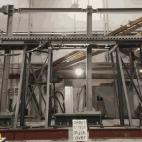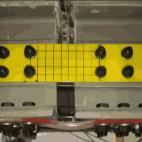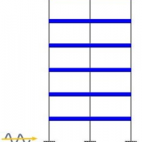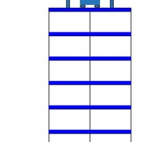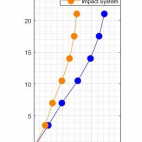Roberto Andreotti, Ph.D. Candidate 34th cycle, University of Trento, DICAM
Ph.D. degree on 16/06/2022
Structural design in seismic areas has become more and more effective in preventing structural collapse. Nevertheless, the methods adopted by engineers are still not able to prevent from significant economic losses, such as structural elements that have to be totally replaced after the occurrence of the earthquake. Because of this, the prevention from the collapse of a building needs to be enlarged to totally avoid its permanent damage. In this respect, researchers from all over Europe proposed new types of structural connections, designed to dissipate energy and be replaceable after the seismic event. DISSIPABLE is a research project, funded by the European Union, which aims to test the seismic behavior of steel frames equipped with such connections. The lateral response of the frame to the earthquake is simulated by means of hydraulic actuators, which are numerically controlled, so to perform the so-called ‘hybrid simulation’. The main characteristics of this type of test is to split the frame into a physical part, which is built in the laboratory, and a numerical part, which is instead included in the algorithm for the actuators control. As shown in Figure 1, the first floor was then realized and tested in the Laboratory of Material and Structural Tests at DICAM in Trento. Figure 2 depicts the dissipative replaceable connection with which the frame is equipped.
Still in the field of passive structural control, an innovative non-linear control system is being developed, which is based on the impact phenomenon. As depicted in Figure 3, a simple six-storey steel frame is equipped at the top floor with a mass, allowed to move freely between two stoppers set at a certain distance. The impact phenomenon, creates two beneficial effects on the structure. First the heavy non-linearity induced by the impulsive forces transfers energy towards higher modes of vibration, characterized by lower participant masses. Moreover, a certain amount of energy is dissipated through the impacts. As a results, Figure 4 shows how the impact damper can effectively reduce the deformation of the frame due to lateral seismic loads.

